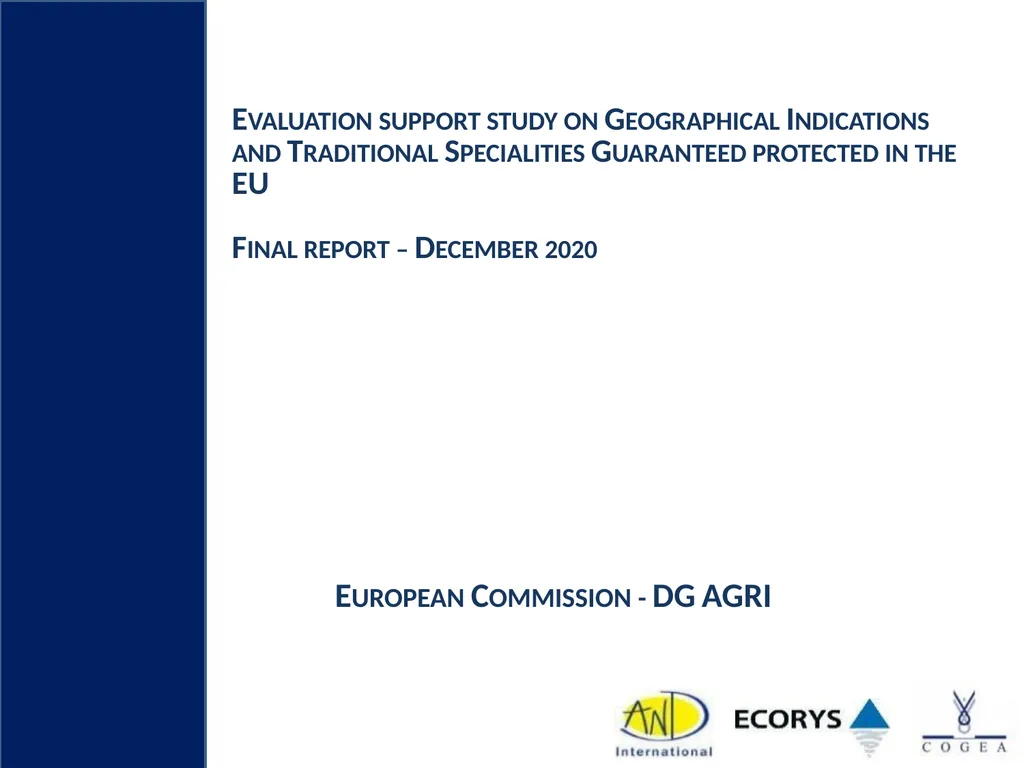
Author : alida-meadow | Published Date : 2025-05-23
Description: Evaluation support study on Geographical Indications and Traditional Specialities Guaranteed protected in the EU Final report December 2020 European Commission - DG AGRI Introduction - objectives Study conducted from December 2019 toDownload Presentation The PPT/PDF document "" is the property of its rightful owner. Permission is granted to download and print the materials on this website for personal, non-commercial use only, and to display it on your personal computer provided you do not modify the materials and that you retain all copyright notices contained in the materials. By downloading content from our website, you accept the terms of this agreement.
Here is the link to download the presentation.
"Evaluation support study on Geographical"The content belongs to its owner. You may download and print it for personal use, without modification, and keep all copyright notices. By downloading, you agree to these terms.













